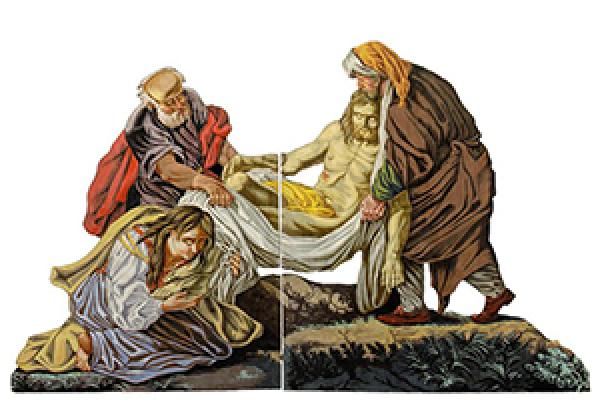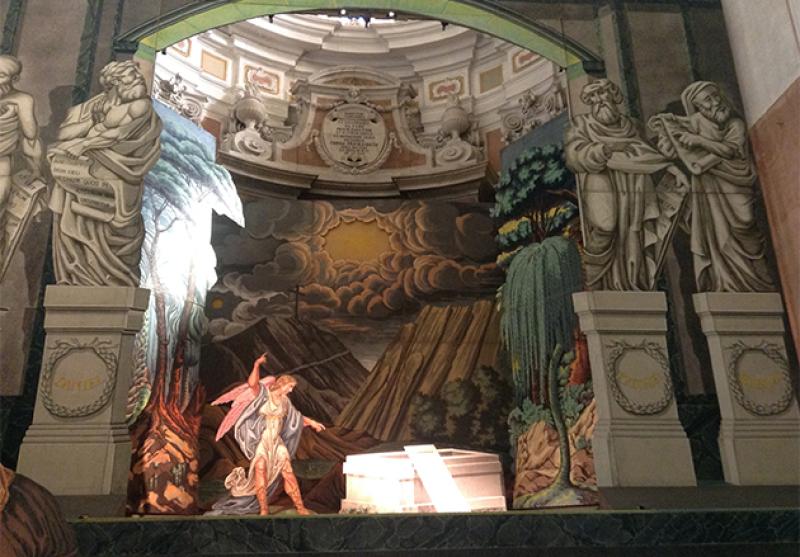Cartelami: Team-Taught Course Explores Centuries-Old Art

A group of Ohio State faculty members representing a broad range of areas from the Arts and Sciences and beyond are collaborating to team-teach a spring semester course for 19 graduate students. Their focus is on “cartelami,” a centuries-old art phenomenon from the northern Mediterranean.
“Cartelami are life-size, ephemeral artifacts — intricately painted religious scenes on cardboard, dating back to the 17th century,” said Lisa Florman, professor and chair of the Department of History of Art, who developed the course with Laura Lisbon, professor in the Department of Art. “They were created on cheap materials but ornately decorated in the style of the Catholic churches of northern Italy, and displayed during Holy Week around Easter. They even included some sort of performance aspect — almost like a stage set — so the parishioners could interact with them.”

Recently, she explained, many of the preserved pieces were rediscovered in churches in rural, provincial parts of northern Italy. “They were found tucked away in church attics and storage spaces, and Italian art historians became interested in the traditions surrounding these long-surviving artifacts.”
According to Kay Bea Jones, professor in the Knowlton School of Architecture, the course grew from deep cross-disciplinary connections to the research that extend to relations developed with the University of Genoa in Italy, and especially with Italian art historian Franco Boggero. He spoke at Ohio State and at the Columbus Museum of Art on the topic last year.
For the Ohio State group, Florman said they are focused on insights revealed by the cartelami, from the contexts of various fields. That’s why the team-taught class brings in visiting artists and guest lecturers from classics, comparative studies, folklore studies, theatre, English and even architecture.
“There’s a whole cast of people teaching this class; it’s a real collaboration and they’re each approaching the topic from different perspectives,” she said. “For example, from folklore and religious studies, we can explore the ritual aspect of the cartelami. From art and art history, we can examine them as an early form of installation art and consider their relation to other kinds of painting. From theatre and architecture, we look at scale and scenography.” Each faculty member teaches part of the course; several visiting artists are providing other insights.
Florman said most of the graduate students involved are MFA students in art. “I’ve really been impressed with the students and the depth of their engagement with the topic,” she said.
“The art graduate students are from a wide variety of disciplines and are all deeply engaged in their own studio practices, but have found a variety of formal or conceptual interests in the cartelami that inform their work,” added Lisbon. “Bringing in three contemporary guest artists have further underscored the relevance of these wonderfully unique liturgical stage sets from long ago.”
The students will make final presentations that illuminate their work through their engagement with the course material. The collaborative project is supported by an Arts and Humanities Grant for research and creative activity.
Cartelami installed in a side chapel at San Matteo in Laiguelgia (2013)
